
How to Use Adafruit LSM303DLHC Triple-axis Accelerometer+Magnetometer (Compass): Examples, Pinouts, and Specs
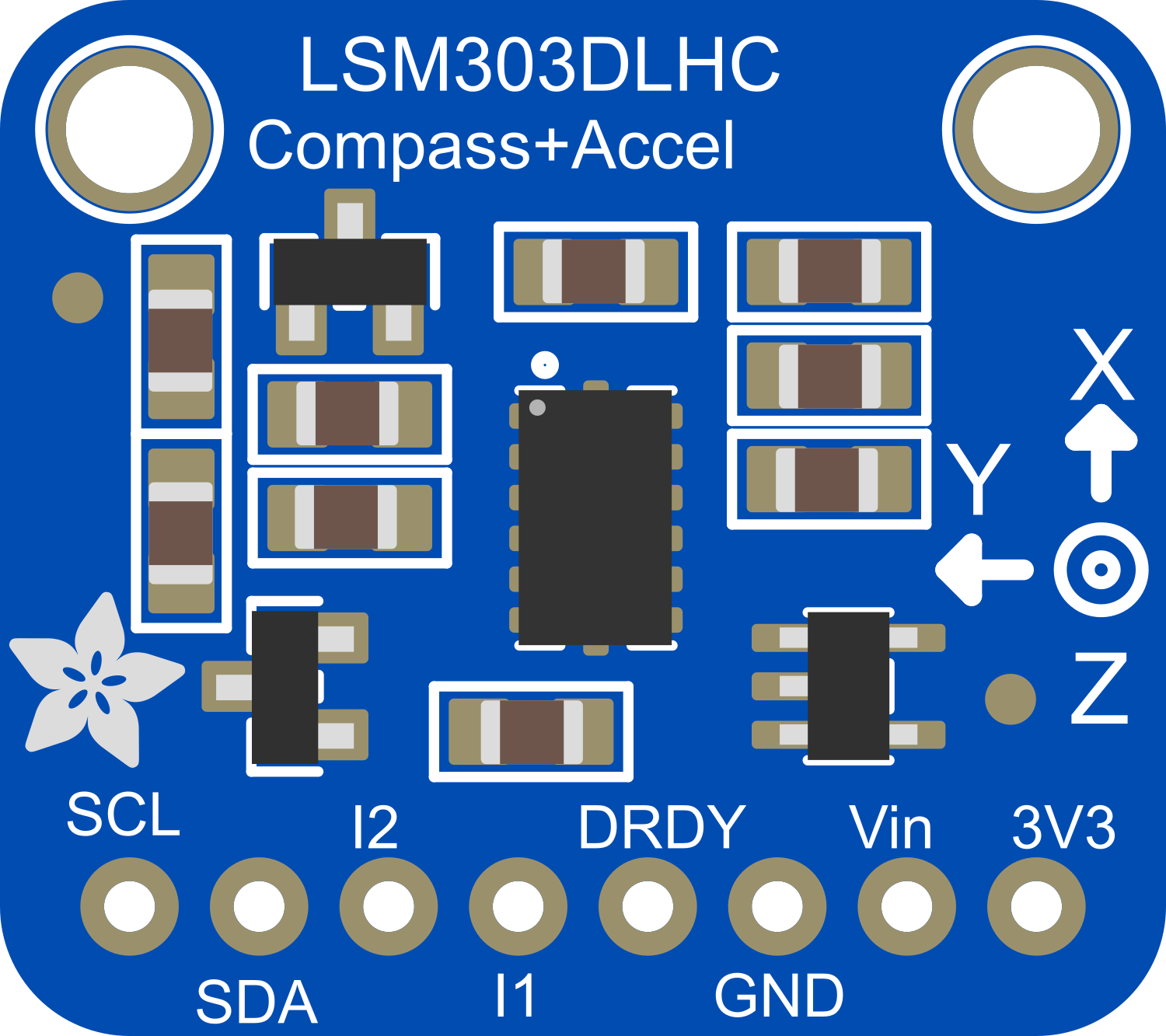
 Design with Adafruit LSM303DLHC Triple-axis Accelerometer+Magnetometer (Compass) in Cirkit Designer
Design with Adafruit LSM303DLHC Triple-axis Accelerometer+Magnetometer (Compass) in Cirkit DesignerIntroduction
The Adafruit LSM303DLHC is a compact and versatile sensor module that combines a triple-axis accelerometer and a triple-axis magnetometer. This sensor is capable of providing precise data on both acceleration and magnetic fields in three dimensions, making it an ideal choice for a wide range of applications including robotics, gaming, personal navigation, and tilt-compensated compasses.
Explore Projects Built with Adafruit LSM303DLHC Triple-axis Accelerometer+Magnetometer (Compass)
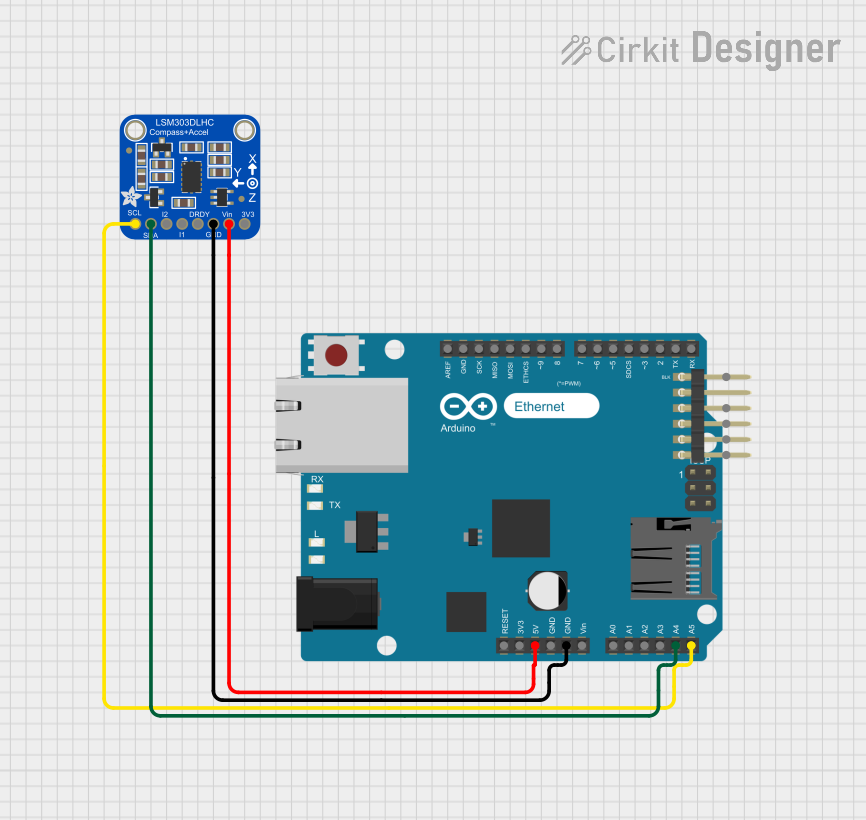
 Open Project in Cirkit Designer
Open Project in Cirkit Designer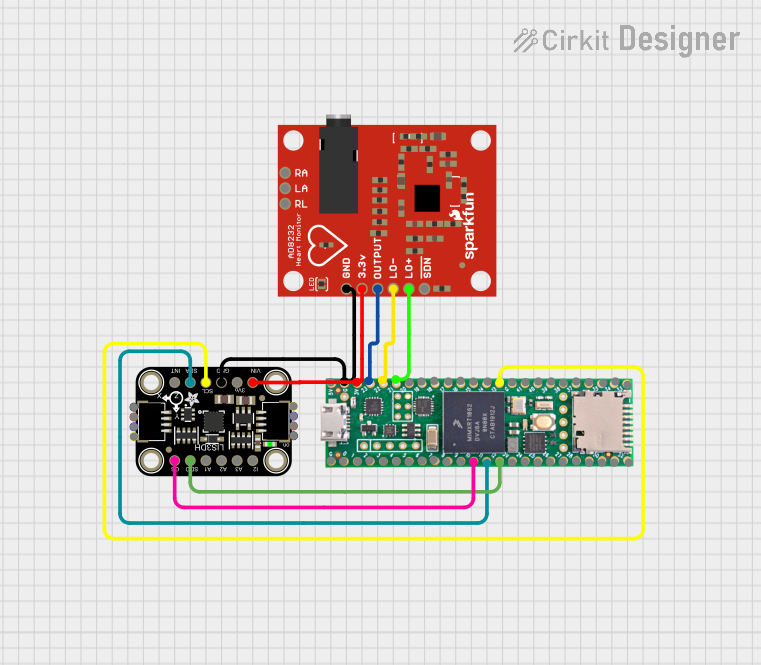
 Open Project in Cirkit Designer
Open Project in Cirkit Designer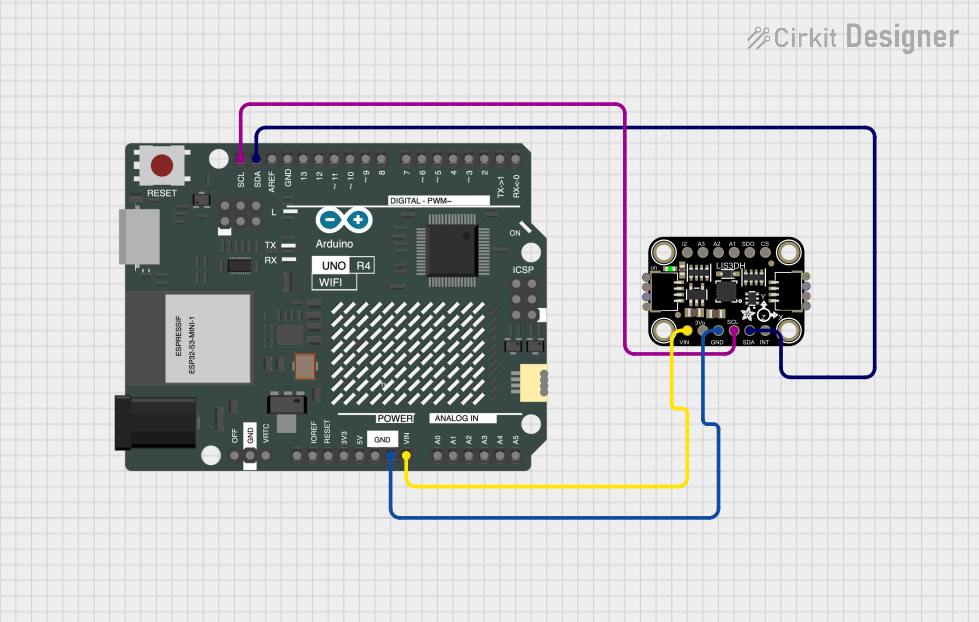
 Open Project in Cirkit Designer
Open Project in Cirkit Designer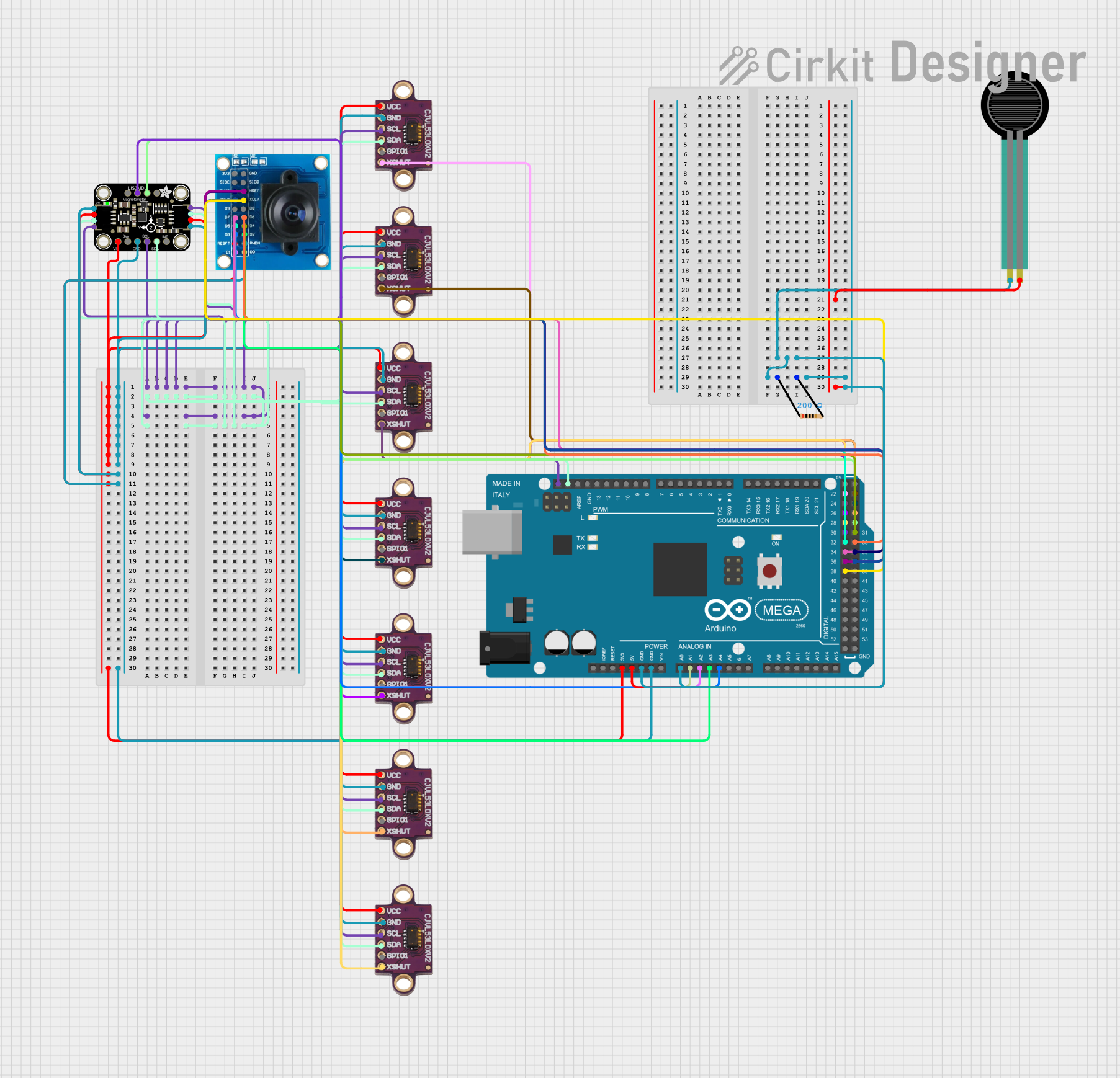
 Open Project in Cirkit Designer
Open Project in Cirkit DesignerExplore Projects Built with Adafruit LSM303DLHC Triple-axis Accelerometer+Magnetometer (Compass)

 Open Project in Cirkit Designer
Open Project in Cirkit Designer
 Open Project in Cirkit Designer
Open Project in Cirkit Designer
 Open Project in Cirkit Designer
Open Project in Cirkit Designer
 Open Project in Cirkit Designer
Open Project in Cirkit DesignerTechnical Specifications
General Features
- Accelerometer:
- Measurement Range: ±2g/±4g/±8g/±16g (selectable)
- 12-bit resolution
- Magnetometer:
- Measurement Range: ±1.3 to ±8.1 gauss
- Gain settings available for increased sensitivity
- Communication:
- I2C serial interface
- Supply Voltage:
- 3.3V (DO NOT exceed 3.6V)
- Operating Temperature:
- -40°C to +85°C
Pin Configuration and Descriptions
| Pin Number | Name | Description |
|---|---|---|
| 1 | VIN | Supply voltage (3.3V) |
| 2 | 3Vo | 3.3V regulated output |
| 3 | GND | Ground |
| 4 | SDA | I2C data line |
| 5 | SCL | I2C clock line |
| 6 | DRDY | Data ready output (optional) |
Usage Instructions
Connecting to an Arduino UNO
- Connect VIN to the 3.3V output on the Arduino.
- Connect GND to a ground pin on the Arduino.
- Connect SDA to A4 (SDA) on the Arduino.
- Connect SCL to A5 (SCL) on the Arduino.
- (Optional) Connect DRDY to a digital pin if you wish to use the data ready interrupt feature.
Arduino Library and Initialization
To use the LSM303DLHC with an Arduino, you will need to install the Adafruit LSM303DLHC library. This can be done through the Arduino Library Manager:
- Open the Arduino IDE.
- Go to Sketch > Include Library > Manage Libraries...
- Search for "Adafruit LSM303DLHC" and install the library.
After installing the library, you can include it in your sketch and initialize the sensor as follows:
#include <Wire.h>
#include <Adafruit_Sensor.h>
#include <Adafruit_LSM303_U.h>
Adafruit_LSM303_Accel_Unified accel = Adafruit_LSM303_Accel_Unified(54321);
Adafruit_LSM303_Mag_Unified mag = Adafruit_LSM303_Mag_Unified(12345);
void setup(void) {
Serial.begin(9600);
if (!accel.begin()) {
Serial.println("No accelerometer detected");
while (1);
}
if (!mag.begin()) {
Serial.println("No magnetometer detected");
while (1);
}
}
void loop() {
// Add code to read from the sensor and output the results.
}
Reading Sensor Data
To read data from the accelerometer and magnetometer, you can use the following code snippet:
sensors_event_t event;
accel.getEvent(&event);
Serial.print("X: "); Serial.print(event.acceleration.x); Serial.print(" ");
Serial.print("Y: "); Serial.print(event.acceleration.y); Serial.print(" ");
Serial.print("Z: "); Serial.print(event.acceleration.z); Serial.println(" m/s^2 ");
mag.getEvent(&event);
Serial.print("X: "); Serial.print(event.magnetic.x); Serial.print(" ");
Serial.print("Y: "); Serial.print(event.magnetic.y); Serial.print(" ");
Serial.print("Z: "); Serial.print(event.magnetic.z); Serial.println(" uT");
Troubleshooting and FAQs
Common Issues
- Sensor not detected: Ensure that the wiring is correct and that the sensor is properly powered.
- Inaccurate readings: Calibrate the sensor as per the datasheet instructions, and ensure that it is not near any magnetic or metallic objects that could interfere with its readings.
- No data on serial monitor: Check the baud rate in the serial monitor matches the baud rate specified in your
setup()function.
FAQs
Q: Can I use this sensor with a 5V Arduino? A: Yes, but ensure that you connect the VIN pin to a 3.3V output on the Arduino, as the sensor is not 5V tolerant.
Q: How do I calibrate the magnetometer? A: Calibration involves rotating the sensor in several orientations and using the provided library functions to compute offsets. Refer to the library's documentation for detailed instructions.
Q: What is the purpose of the DRDY pin? A: The DRDY (Data Ready) pin is an optional feature that signals when new data is available to read. It can be used to trigger an interrupt in your microcontroller for more efficient data acquisition.
Remember to always consult the sensor's datasheet and the Adafruit LSM303DLHC library documentation for the most detailed and accurate information.